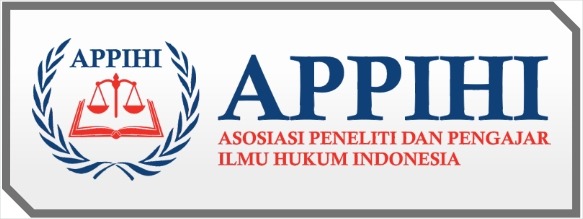The Relationship between Islamic Law and the Concept of Gender Equality Based on Maqasid Sharia Perspective
DOI:
https://doi.org/10.61194/law.v1i3.90Keywords:
Gender Equality, Islamic Law, Gender Maqasid ShariaAbstract
This study aims to determine the relationship between Islamic law and gender equality using the maqashid sharia approach. Gender equality is a concept that refers to the granting of equal rights, responsibilities, and opportunities to all individuals regardless of gender whether male or female which covers various aspects of life. This research analyzes the relationship between Islamic law as the main law of Islam and gender equality, which is a concept in all religions that is drawn using the maqashid sharia perspective. The research method used is qualitative literature that uses maqasid sharia studies as the primary data source and secondary data such as literature related to the studies discussed. The results show that in the perspective of maqasid sharia, gender equality in Islamic law holds the main principle of maintaining the benefit and justice as well as the maintenance of the five principles of maqashid sharia consisting of hifdz ad-din, hifdz an-nafs, hifdz al-aql, hifdz al-nasl, and hifdz al-mal.
References
Alarcón, D. M., & Cole, S. (2019). No sustainability for tourism without gender equality. Journal of Sustainable Tourism, 27(7), 903–919. https://doi.org/10.1080/09669582.2019.1588283
Alsarve, D. (2018). Addressing gender equality: enactments of gender and hegemony in the educational textbooks used in Swedish sports coaching and educational programmes. Sport, Education and Society, 23(9), 840852.https://doi.org/10.1080/13573322.2017.1280012
Conley, H., & Page, M. (2018). The Good, the Not So Good and the Ugly: Gender Equality, Equal Pay and Austerity in English Local Government. Work, Employment and Society, 32(4), 789–805. https://doi.org/10.1177/0950017018768207
Johnson Ross, F. (2018). From municipal feminism to the Equality Act – Legislation and gender equality work in UK local government 1980-2010. Women’s Studies International Forum, 66, 1–8. https://doi.org/10.1016/j.wsif.2017.11.006
Koirala, S. (2022a). Women’s Land Ownership and Gender Equality in Nepal. Journal of Applied Social Science, 16(2), 533–547. https://doi.org/10.1177/19367244221077624
Koirala, S. (2022b). Women’s Land Ownership and Gender Equality in Nepal. Journal of Applied Social Science, 16(2), 533–547. https://doi.org/10.1177/19367244221077624
Mateos, J. T., Fernández-Sáez, J., Marcos-Marcos, J., Álvarez-Dardet, C., Bambra, C., Popay, J., Baral, K., Musolino, C., & Baum, F. (2022). Gender Equality and the Global Gender Gap in Life Expectancy: An Exploratory Analysis of 152 Countries. International Journal of Health Policy and Management, 11(6), 740–746. https://doi.org/10.34172/IJHPM.2020.192
Pearl-Martinez, R. (2020). Global trends impacting gender equality in energy access. IDS Bulletin, 51(1), 7–26. https://doi.org/10.19088/1968-2020.103
Pierotti, R. S., Lake, M., & Lewis, C. (2018). Equality on His Terms: Doing and Undoing Gender through Men’s Discussion Groups. Gender and Society, 32(4), 540–562. https://doi.org/10.1177/0891243218779779
Spierings, N., Smits, J., & Verloo, M. (2009). On the compatibility of Islam and gender equality. Social Indicators Research, 90(3), 503–522. https://doi.org/10.1007/s11205-008-9274-z
Syed, J., Ali, F., & Hennekam, S. (2018). Gender Equality in Employment in Saudi Arabia: A Relational Perspective. Career Development International, 163–177. https://doi.org/10.1108/CDI-07-2017-0126
Wolff, S. (2022). Gender equality in Tunisia: The EU’s tripartite dialogue. Mediterranean Politics, 27(4), 435–455. https://doi.org/10.1080/13629395.2021.1883285. Al-Qur’an Surah Al-Hujurat Ayat 13. (n.d.).
Az-Zuhaili, W. (1986). Ushul al-Fiqh al-Islami. Beirut: Dar al-Fikr.
Faisol. (2004). Hermeneutika Gender: Perempuan dalam Tafsir Bahr al Muhith. Yogyakarta: PSW IAIN Sunan Kalijagajanuar.
H.T. Wilson. (1989). Sex and Gender, Making Cultural Sense of Civilization. New York: EJ. Brill.
J. A, D. (2013). Menjadi Indonesia tanpa Diskriminasi. Jakarta: Gramedia.
Kadarusman. (20005). Agama, Relasi Gender dan Feminisme. Yogyakarta: Kreasi Wacana.
Louis Malouf. (1975). Al-Munjid fi al-Lughah wa al-‘Alam. Beirut: Dar el-Mashreq.
Ma’ruf, M. (2016). Dekonstruksi Gender Dalam Pesantren. Jurnal Al-Makrifat, 1(1).
Masyhur Effendi. (2014). Dinamika Hak Asasi Manusia dalam Teori Hukum Alam. Bogor: Ghalia Indonesia.
Nasaruddin Umar. (2001). Argumen Kesetaraan Gender Perspektif al-Qur`an. Jakarta: Paramadina.
Purnomo, A. (2012). Teori Peran Laki-Laki Dan Perempuan. Egalita, 1–21. https://doi.org/10.18860/egalita.v0i0.1920
Rhona K.M Smith, et. al. (2008). Hukum Hak Asasi Manusia, ctk. Pertama. Yogyakarta: Pusat Studi Hak Asasi Manusia Universitas Islam Indonesia.
Shidiq, G. (1970). Teori Maqashid Al-Syari’Ah Dalam Hukum Islam. Majalah Ilmiah Sultan Agung, 44(118), 117–130.
Sujarweni, V. W. (2015). Metode Penelitian Bisnis & Ekonomi. Yogyakarta: Pustaka Baru Press.
Zaitunah Subhan. (2015). Alquran dan Perempuan Menuju Kesetaraan Gender dalam Penafsiran. Jakarta: Kencana.






